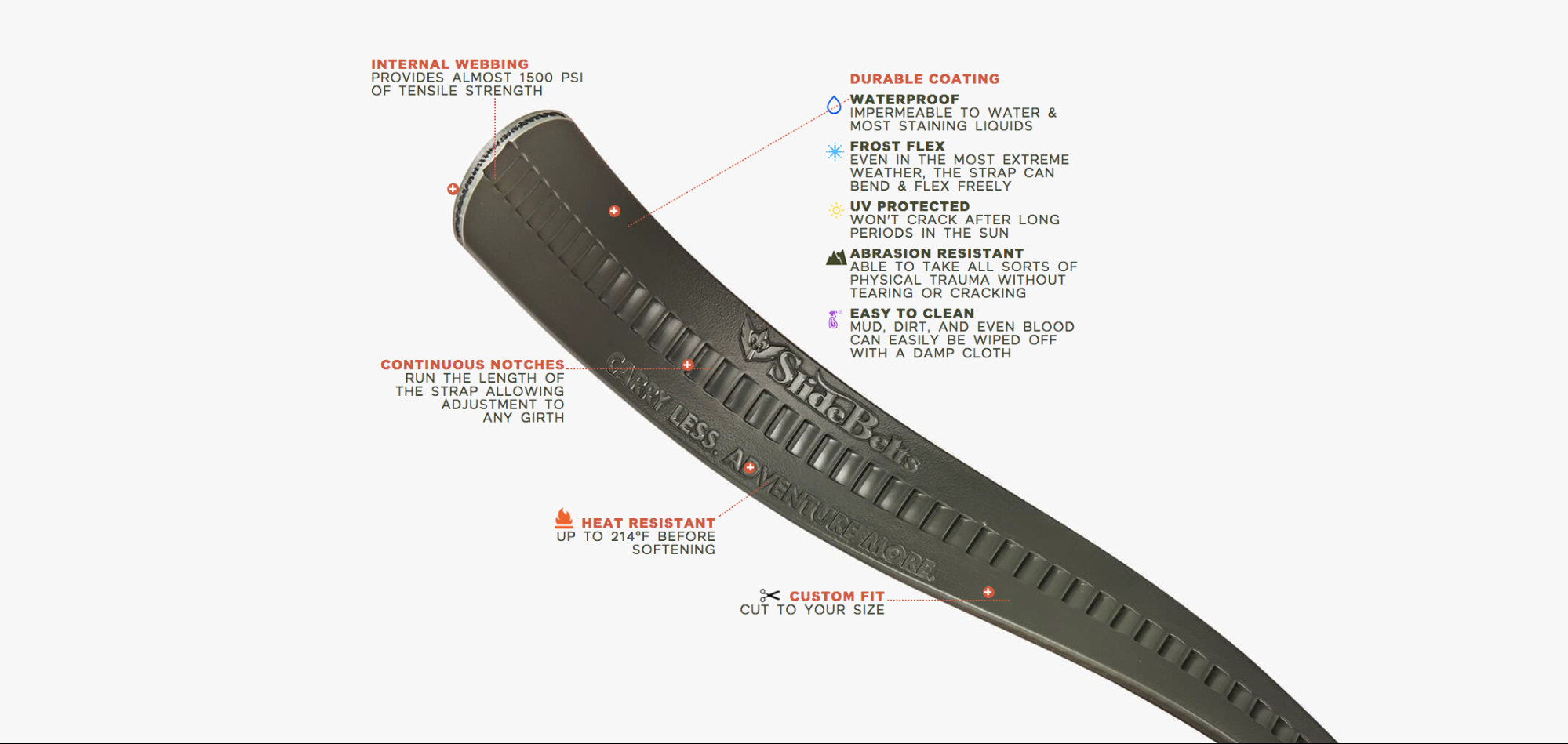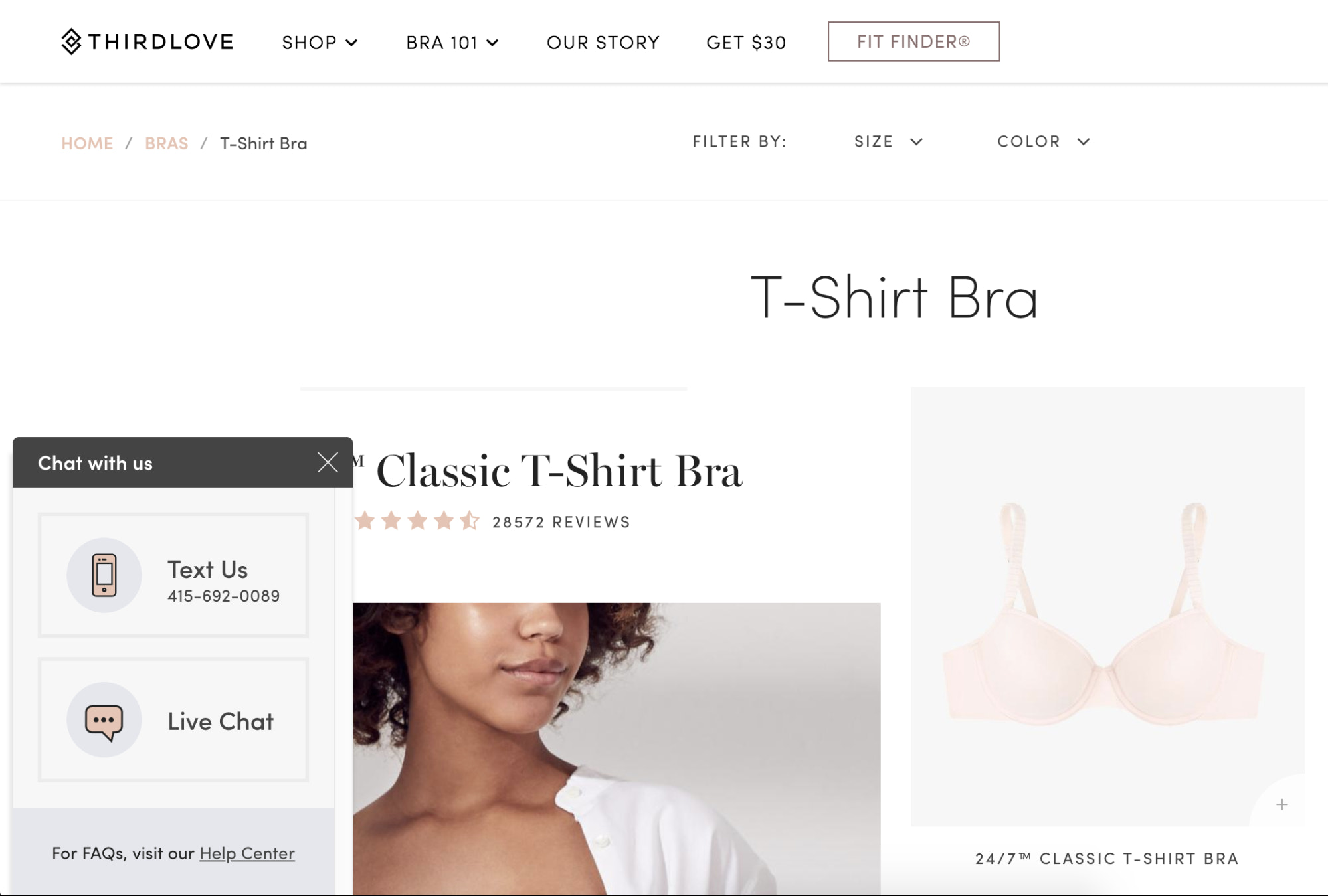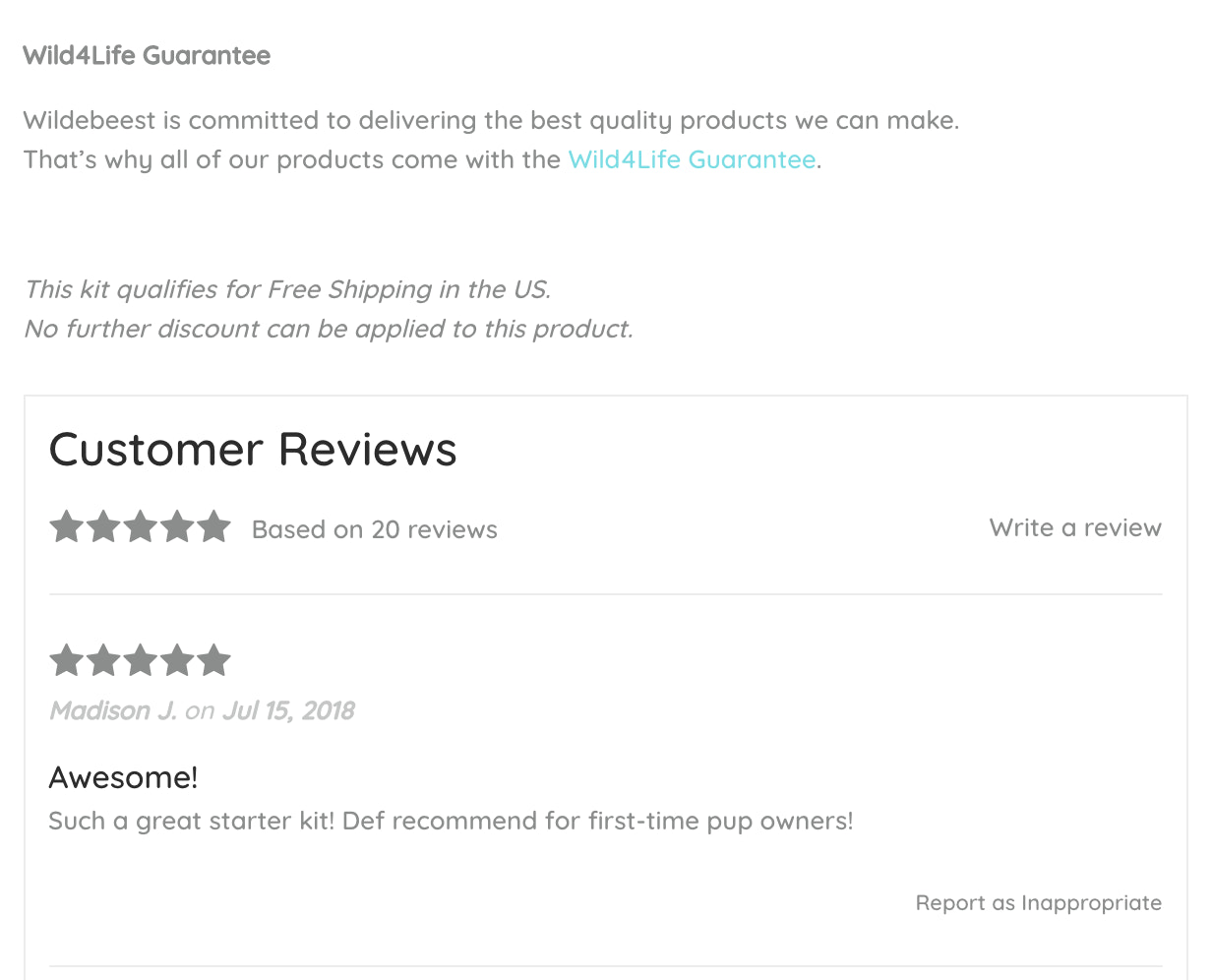Your product page is where the majority of your customers finally make the decision to either buy your product or leave your store. Unfortunately, it's an often-neglected part of the sales funnel.
While most store owners tend to focus on improving their checkout page or tweaking what happens after a visitor adds a product to their cart, customers won’t get that far unless you create solid product pages that convert.
Product pages exist to tell customers why your product is awesome, explain which needs it fulfills or problem it solves, and list the details a customer needs to see in order to make a buying decision. Beautiful photos of your product andwell-written product descriptionsare important, but they’re also the table stakes—there’s a lot more to you need to get right in order to make a great product page.
To help you increase sales and revenue, let’s review a few timeless ways to improve your product pages.
Free Webinar: Marketing 101
Struggling to grow sales? Learn how to go from first day to first sale in this free training course.
Reserve your seat nowTable of Contents
- Don’t wait to pique people’s interest
- Understand and address customer concerns
- Highlight a clear call-to-action
- Activate live chat on key pages
- Complement your photography with videos or GIFs
- Showcase reviews and personal testimonials
- Prominently display social proof and guarantees
- Upsell and cross-sell where appropriate
- Don’t leave your shelves completely empty
1. Don’t wait to pique people’s interest
In the world of journalism every reporter is told to put the lead up front. This means you start a story with the details that matter and never force people to dig in order to find essential information.
Store owners can learn a thing or two from this approach. While you may have a number of important product details to cover on a single page, you shouldn’t leave potential customers in suspense; it just takes a single click of the back button to lose a sale. Make it clear what the product is and why it’s valuable, and quickly.

Nerd Skincare cleverly applies this principle by providing a distilled summary of the product, what it’s made of, and what benefits it can provide in a single, crisp paragraph at the top of the page.
Each of these individual ideas is explored in more detail further down, adding rich context, explanation, and images that help inform and provide proof of the claims made. But for most products, the choice to lead with “at a glance” copy is the right one, because the customer is never left waiting to have their interest piqued.
2. Understand and address customer concerns
When figuring out what to include on your product pages, remember that there’s an inherent relationship between the product, your customer’s motivations to buy it, and their objections that may delay a purchase.
When selling theirSurvival Belt, for example, SlideBelts knows that customers have far more questions about functionality than just about the aesthetics. The look of the belt can be conveyed with a high-quality photograph, which leaves room for the copy to address durability and utility. For this product, focusing on how well the belt stands up to harsh environments and frequent wear and tear is essential to helping potential customers see the value.

Understanding your customers and challenging your own assumptions throughvoice of customer researchis also important in figuring out what’s on your customer’s mind when purchasing.
Start by understanding your customer’s motivations for buying your product and the objections or concerns they need addressed.
Kettle & Firesells a health product that they know not every potential customer will be familiar with (“Why add bone broth to my diet?”). On top of that, the traditional approach to making bone broth comes with built-in hurdles around sourcing ingredients and time to prepare. This creates a natural opportunity to have the copy lead with the hassles of the “old way” versus the comparative ease of using a Kettle & Fire product.

Note that while the potential increase in conversions is one benefit, addressing common concerns can also help you set better expectations, which will reduce the number of returns on a product. Your support queue will thank you for your efforts of reducing customer frustration—the main source of which is receiving a product that doesn’t match their expectations.
3. Highlight a clear call-to-action
It seems obvious, but in your pursuit of an “optimized” product page make sure you don’t accidentally drown out the most important element: your add to cart button. Buying should be easy, which means your call to action should be impossible to miss, without being gaudy or clashing with your design.

Vermilyea Pelledidn’t have to compromise its sleek, minimalist design that prefers to take a back seat in order to highlight its handmade bags. By surfacing the “Add to Cart” button up top and using simple language (because now is not the time to be clever), it’s easy to find your way to checkout.
4. Activate live chat on key pages
Live chat isconsistently ratedas having the highest satisfaction levels across all support channels; customers like that they get answers fast, can multitask, and feel it’s the most efficient use of their time.
Just like an FAQ on your product page, targeted live chat allows potential customers to get their questions answered quickly, making it easier for them to make an informed decision. The difference is they receive their answer through a conversation, eitherwith a chatbotor by talking to you or your support team. This means live chat can require manual work, and is often best to use during high-traffic periods (to close more sales) or on specific product pages, such as pricier bundles that generate higher than average order values.
Live chat also lets your visitors know that you’re easily and quickly accessible, making your business more trustworthy. Even if your visitors don’t use live chat, just seeing that it’s available can give them that added peace of mind.

当访问者选择使用即时聊天,那t’s your opportunity to help them address questions that may be stalling their purchase. You don’t have to be a salesperson; just be as helpful and transparent as possible. For example, having live chat available fits withThirdLove’sstated mission to help their customers find a bra that fits.
For a more in-depth look at live chat integrations and how they can help your business, read our blog post ondriving sales with live chat.
5. Complement your photography with videos or GIFs
One of the obvious downsides of shopping online is not being able to to touch, feel, or physically examine a product you're considering. Because of this, product visuals have to do a lot of heavy lifting in order to provide a similarly useful experience.
We’ve long championed howproduct photographycan make or break any ecommerce site, but it’s important to remember that visuals aren’t just limited to photography, and effectively using visuals isn’t just about the aesthetics; great photography, GIFs, and videos all keep your customers questions and concerns in mind and help them make a more informed decision.

Storq, which sells maternity clothing, emphasizes their soft, comfortable materials in their copy and uses video of a model wearing their clothes to show how a customer can expect each piece to fit.
Videos and animated photos don’t need to be lengthy or complicated, either. Just look at howKeySmartuses a simple animated GIF, with no audio, to show off their product in ways a still image or a set of images can’t quite match.

If your customerswerebuying this product in person, what would they closely examine? What would they want to see and compare? Online stores can bridge the gap by correctly using visuals to show customers what they’d naturally look out for when buying the product in person.
Last but not least, remember that while your product photography and videos live on your site, they’re often what’s used to feature and promote your products offsite, too. Wherever your products go, your photos and videos will follow, so they’re always worth investing in.
If you want to learn more about how video can help your ecommerce business, check out our brief guide tousing video to increase conversions.添加视频到你的产品页面可以是simple as embedding a video you uploaded to YouTube or using an app from theShopify App Store.
6. Showcase reviews and personal testimonials
Generally speaking, the more a product rests on providing a specific positive outcome the more valuable it is to havecustomer testimonials.Reviews, on the other hand, have become essential for establishing trust in almost every product category
Nearly95% of shoppersread reviews before making a purchase, and surveys haveconsistently shownthat customers trust reviews more than descriptions provided by the store or manufacturer.
Since using customer reviews is such classic approach, look for ways to catch your customer’s attention or add to the social proof reviews naturally provide. Here’s howWildebeestpairs customer reviews next to their quality guarantee on every product page.

If you want to easily allow customers to add reviews on your product pages, head over to theShopify App Storeand choose from one of the many review apps. As a bonus tip, follow up with customers a few weeks after their purchase and ask them toleave an honest review—email is typically the best channel to do this.
Nearly 95% of shoppers read reviews before making a purchase, which means reviews are essential for establishing trust.
If you sell a product that’s intrinsically tied to a personal outcome, like clearer skin or a better golf swing, testimonials will become a critical part of your marketing toolkit. Stars and quick blurbs are enough to sell a pair of socks, but probably fall short if you’re asking a customer to make a larger investment (e.g. a premium product, or a personal product like skin care).

Great testimonials focus on real people and provide a story of life before and after your product.Luxy Hair’sproducts directly affect their customer’s appearance, so to establish trust they liberally showcase their transformation stories and each customer’s candid experiences with the product.
7. Prominently display social proof and guarantees
If your product is endorsed or given a reputable seal of approval, letting visitors know with a badge or seal can be a shortcut to establishing social proof.
Any certifications or important characteristics of your product, such as safety or legitimacy, are wise to include on your product page (so long as customers care about these aspects). It’s easy to simply write these things into your product description, but badges can save precious space for copy and stand out on your page.

The value of these badges is they quickly help customers check bottom-line concerns off of their list (e.g. if a customer has a gluten allergy and requires a gluten-free product). Note that you may need permission or an official certificate to use specific seals or badges on your website.
When you’re not referencing an official organization or standard (like “USDA Organic”), you can create your own badges that simply distill important features of your product. For example, features such as “Made in Canada” or “High Quality” would work better as nicely designed badges than simple bullet points in a product description.Primal Pit Pasteuses badges in such a way to visually summarize their products.

平息客户的担忧的另一种方法是说play rock-solid guarantees. What’s your return policy? What’s your customer satisfaction policy? Is it hidden away on a separate page for no one to see?
The types of guarantees you can feasibly offer depend on your products and profit margins, but clearly displaying what youcanprovide on your product pages is crucial for reducing ambiguity.
8. Upsell and cross-sell where appropriate
The goal of a product page is to sell. However, many online stores actually end up losing customers by cramming their product pages with excessive additional offers and links to related products.
Upselling and cross-sellingcan be key to increase your average order value, but moderation, and organization, is paramount. Going overboard with related products and banners can feel overly-aggressive and spammy, cause analysis paralysis, and distract the shopper from actually completing their intended order.

Connecting the additional products to what a customer is currently looking at can make all the difference, and make your original product even more enticing.3sixteenrecommends complementary pieces to encourage shoppers to consider purchasing a complete outfit.
To keep buyers focused on the product they’re already viewing, display a healthy amount of additional products, without overcrowding the space that you have.Slyde, a store that sells bodysurfing handboards, only features their most relevant product add-ons, and right next to their offer of free shipping and promise of stress-free returns, which is a nice touch.

9. Don’t leave your shelves completely empty
A sold-out item doesn’t mean you have to lose a customer for good. When one of your products is temporarily out of stock, you can avoid potential future sales slipping away by giving shoppers the option to leave their contact information in order to be notified when the product is available again.
Greats, a footwear company from Brooklyn, often has limited edition sneakers available in special prints or made in collaboration with other designers. When a certain size isn’t available, customers are prompted to “skip the line” and get a notification when their size is back in stock.

Your Shopify theme may already have this functionality built in, but if it’s not, you can check out apps likeBack in StockandNow Back in Stock.You can also look at other ways to capture leads onsold-out product pages, like a customized landing page or offering pre-orders.
创建名单t pages that sell
Your product pages are the lifeblood of your online store. If they're poorly presented or unstructured, you could risk frustrating your customers and leaving a lot of money on the table.
Going the extra mile and creatingstand-out product pageswill also do wonders for your store’s brand and reputation, separating you from your competition. The more effort you put into your product pages, the more interested shoppers will be in both your products, and your company as a whole.
Though note that nobody getseverythingright, especially without making a few mistakes. The advice shared here is a starting place, and all of it should be tested. It’s unwise to assume every idea that’s worked for someone else will instantly work for your products.
But don’t let that discourage you either. Sometimes, the smallest or simplest change can have a significant impact on your business. Start with strong ideas and iterate—you should begin see your product pages converting browsers into buyers better than ever before.

Free Reading List: Conversion Optimization for Beginners
Turn more website visitors into customers by getting a crash course in conversion optimization. Access our free, curated list of high-impact articles below.
Get our Conversion Optimization reading list delivered right to your inbox.
Almost there: please enter your email below to gain instant access.
We'll also send you updates on new educational guides and success stories from the Shopify newsletter. We hate SPAM and promise to keep your email address safe.
How about you? What’s a change you’ve recently made to your product pages that has helped increase conversions?



